Lightweight airborne tank M22 Locust
The strategy and specificity of the actions of the American army during the Second World War involved a large number of amphibious operations. Close attention was paid to the drop aviation landings, which were given an almost priority role in planning the future landing of American units in Europe. To support the airborne assault forces, a tank was needed that could be airlifted either by a glider or by a transport aircraft. Already on February 7, 1941, at a special meeting of the leadership of the US Army, the issue of developing and launching a light air transportable tank was raised. On May 22, 1941, by order of the US Armed Forces, the concept of a new combat vehicle was determined, the tank received a preliminary T9 index. The leading American companies General Motors and Mormon-Herington, as well as the designer John Christie, who became famous for his pre-war developments, were involved in the competition for the development of technical documentation for the future combat vehicle. Ultimately, the military chose the project of the Mormon-Herrington company, it was taken as a basis, having won the competition.
The T9 design of the Mormon Herrington tank caught the attention of the American military with its 37-mm M6 cannon, 25-mm thick frontal armor, Lycoming engine and a modified suspension with vertical spiral springs. The first model of the tank was ready in the fall of 1941. Tests have demonstrated its suitability for transportation by plane Douglas C-54 Skymaster (after minor modifications). The tank was transported by plane with the turret removed, located in the cargo hold, the hull was transported outside - under the fuselage.
The first tank was assembled in April 1942 of the year, by May of the same year it had already successfully passed the test stage. Unlike subsequent serial combat vehicles, the tank had a stepped frontal part with a fixed, paired 7,62-mm machine gun. During the design of the light tank, its mass increased and exceeded the required one by the customer, after which it was decided to abandon the electric drive of the turret, weapon stabilizer and fixed machine guns. In November 1942, a lightweight model of the tank appeared, which successfully passed flight tests. In February, 1943, the tank was transferred to military trials. According to their results, minor changes were made to the design of the combat vehicle.
It is worth noting that since February 1942, the development of an improved tank under the designation T9E1, was created taking into account the experience gained after the start of the Second World War. The new tank had a modified frontal detail. He received a straightened upper hull frontal sheet, distinguished by a good angle of inclination, which increased the thickness of the above armor and the likelihood of rebound. In the mass production of the machine went with a straight front sheet. Serial production of the tank, which received the M22 index, began in March 1943, at the plants of the company "Mormon Herrington" even before its adoption by the American army. In total, until February 1944, 830 tanks of this type were assembled. Only in September of 1943, he was qualified as a “limited standard vehicle”, receiving the designation of light (airborne) tank М22.
The lightweight air transport tank M22 Lokast was distinguished by its layout, which was traditional for the American tank building of those years. The power plant and fuel tanks were located in the rear of the hull in the engine compartment. The elements of the transmission of the tank were in the front of the hull, and the control compartment and the fighting compartment were interconnected. The crew of the combat vehicle consisted of 3 people: driver, gunner and tank commander. The driver was located in front of the hull, while the gunner and the commander were behind him in the middle of the hull and the tower. The commander of the combat vehicle performed, in addition to his immediate duties, also the duties of the loader weapon. For landing and disembarking from the tank, the crew could use three main hatches: two quadrangular trapezoid shapes on the tower roof (for the gunner and the commander) and a hatch in the form of a leaning out small protruding cabin in the front left part of the hull (driver).
Booking airtransportable tank M22 was designed according to a differentiated bulletproof principle. At the same time, the armor of a combat vehicle could serve as a reliable protection of the crew exclusively from medium fragments with small kinetic energy and medium caliber bullets. The light tank body М22 was created from rolled homogeneous armor plates by welding. The armor player, who created the frontal part of the tank hull, had a thickness of 13 mm and a tilt angle of 65 degrees to the vertical plane. At the same time, a small wheelhouse, protruding in the left front part of the hull, which was opened in the form of a manhole cover, was created from vertical armor plates with a thickness of 25 mm. Similarly, the same frontal detail was created from the same armor plates. The upper part of the tank hull aft was at an angle of 45 degrees to the vertical plane and had a thickness of 10 mm, which provided this part with greater armor resistance than the armor plates of the lower part of the boards with a thickness of 13 mm, but located at a right angle. The stern of the tank consisted of a single vertical part 13 mm thick, the hull roof was made of rolled armor sheet 10 mm thick.
The turret of the tank was completely cast. The walls of the tower around the perimeter were the same thickness - 25 mm. The front part had an inclination in 30 degrees, the sides - 5 degrees, the stern of the turret had no inclination. The roof of the tower of the lightweight air transport tank M22 had a variable thickness (from 10 mm to 19 mm). The cast mask, which protected the 37-mm gun and the machine gun paired with it, had a thickness of 25 mm and a segmental tilt of 50 degrees to the vertical plane. The turret was mounted on a turret box on the longitudinal axis of the hull. The rotation of the tower was carried out only in manual mode using a special shoulder rest.
The main armament of the described combat vehicle was a M37 rifled 6-mm cannon, which was a tank modification of the M3 field-anti-tank gun. The length of the barrel of this gun was 56,6 gauges (2094 mm). The ammunition of the gun was located on the sides of the tank tower and included in its membership 50 unitary shots with armor-piercing, fragmentation or caricature shells. As an auxiliary weapon, an MXN-mm Browning machine gun M7,62A1919, which had a tape feed, was used with an 4-mm Browning machine gun. Ammunition coaxial machine gun consisted of 2500 cartridges. Personal weapons the crew of the combat vehicle had three 11,43 mm machine guns M3 with a common ammunition in 450 ammunition, as well as 12 hand grenades.
The lightweight airborne tank M22 Locust has received an air-cooled Lycoing 0-435T aircraft engine. The use of a six-cylinder carburetor engine with a horizontal cylinder as a power plant allowed us to significantly reduce the height of both the hull and the entire combat vehicle. Thanks to this engine, which developed the 162 hp, it was possible to accelerate the tank when driving on a highway to a speed of just over 56 km / h.
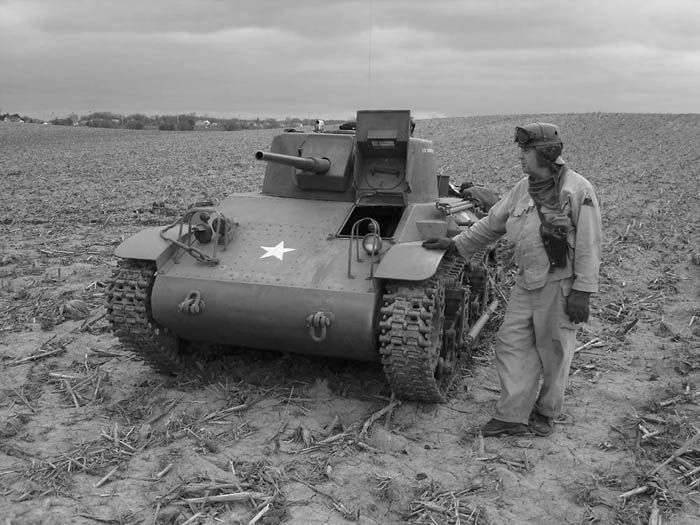
The undercarriage of the lightweight M22 tank consisted of 4's rubberized single road wheels (applied to each board), which were grouped in pairs in trolleys, which, in turn, were suspended on vertical buffer springs. The sloping rear arrangement was different from the road roller with a large diameter and non-rubberized. The sluggard was suspended from the hull, similar to the track rollers, and lowered to the ground level, additionally performing the function of the fifth track roller. The upper branch of the tank track relied on the 2 small rubberized supporting roller. The driving wheel of the combat vehicle had a front location and was equipped with a helical ring gear.
Combat use of tanks M22 Locust
Despite the rather impressive release figures, Locast MNNXX light tanks were practically not used in combat. By enrolling in the mid-22 of the year, the United States Airborne Forces entered into service with the US Airborne Forces, they stood idle until the end of the war, not even taking part in Operation Overlord in June 1943, during which Allied paratroopers were dropped in Normandy. The main reason why this tank did not fight was the lack of suitable means of delivery. In the US, there was a shortage of heavy transport aircraft and gliders. The only available way for the military to transport the tank was its suspension to the Skymaster C-1944. In this case, the tank had to dismantle the turret, which was transported inside the transport aircraft and installed back after landing, which, in turn, significantly reduced the tactical value of a light air transport tank.
Under the lend-lease program 260 tanks М22 were sent to the UK. It was here that the nickname Locust (locust) stuck to the car. The British equipped a part of the tanks that had been equipped with conical adapters for the Little Djon and smoke grenade launchers. Unlike the American military, the British had at their disposal a heavy transport glider, the Hamilcar, which could carry a tank in the air in assembled form. The British specially designed this airframe for the transfer of their light tank Tetrarch. But even despite the presence of a suitable glider, the British used the tank in combat only once. During the crossing over the Rhine as part of Operation Varsity, March 24, 1945, 12 Locust tanks from the 6 airborne reconnaissance and armored regiment took part. Because of the dense anti-aircraft fire of the Germans, only half of them were able to reach the target, but the landed tanks were able to provide valuable support to the British paratroopers.
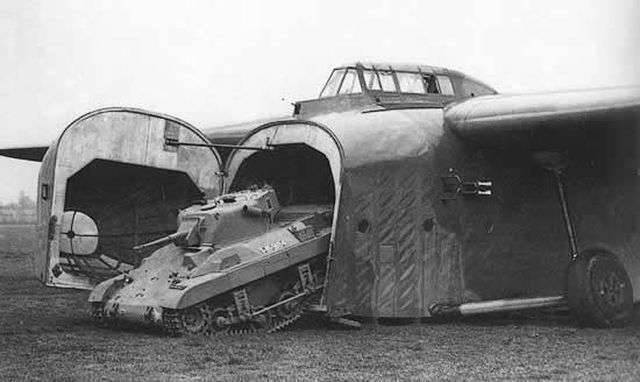
After the end of the Second World War, the tanks continued to be in service with the British army until part of them was transferred to Belgium. In Belgium, these combat vehicles also did not linger, the Belgian military transferred the tanks to Egypt, where they remained in the ranks until the 1956 year. During the Arab-Israeli war 1947-1949, these tanks took part in the fighting, several tanks were captured by the Israelis. Three Lokast М22 tanks were used in the Israeli army until 1952, at the end of the service as training machines.
Although the light tank M22 was used in combat as an airborne one only once, it was quite effective as such. Delivered directly to the battlefield by a heavy transport glider, the M22 tank was an excellent means of enhancing landing forces, although under conditions of a well-organized enemy air defense system, slow and large gliders became an easy target and many tanks died along with the gliders before reaching the battlefield. The 37-mm gun, although weak to fight enemy tanks and its fortifications, could still be used effectively enough to destroy armored vehicles and armored personnel carriers, machine-gun points and enemy guns, although its fragmentation effect on infantry was insufficient. The armor of the tank in the frontal projection reliably protected from fire from large-caliber machine guns, but from the sides and stern the tank was amazed by them without any problems. At the same time, the tank was virtually unprotected from specialized anti-tank weapons, although the frontal armor of the turret had a chance to repel an 37-mm projectile.
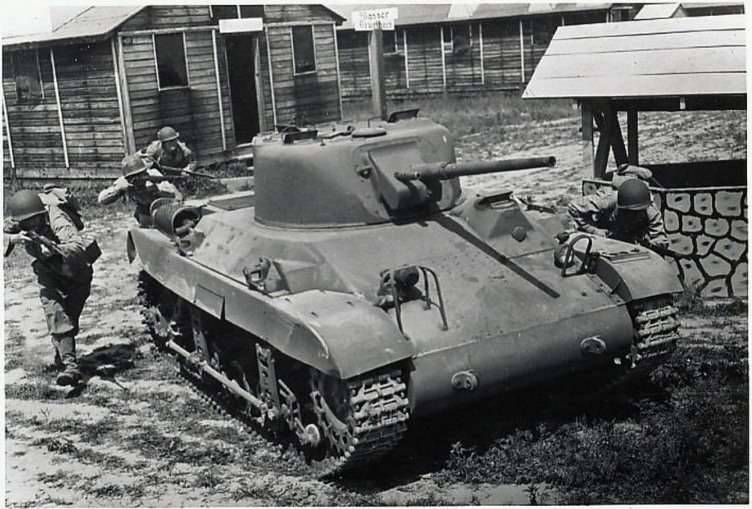
Because of its rather specific purpose, the M22 Locust tank is very difficult to compare with other World War II light tanks. The only serial airmobile tanks at that time were only British Mk.VII "Tetrarch" and Mk.VIII "Harry Hopkins". If to compare with the first of them, then M22 surpasses it in most indicators with an approximate equality in armament and mobility, while being significantly more secure and more compact. The Mk.VIII "Harry Hopkins" somewhat exceeded the M22 in armor thickness, but this was where its advantages ended, as the English tank weighed a whole ton more, was significantly larger and, as a result, less mobile on the battlefield. In addition, both British tanks were armed with an 40-mm QF 2 pounder cannon, which, unlike the 37-mm cannons of their American counterpart, lacked high-explosive shells. Given the completely inadequate anti-tank characteristics of guns of such caliber on the 1944-1945, the main task of such combat vehicles would be infantry support, and the role of guns of British tanks, due to the absence of high-explosive fragmentation projectile, was much more unsuitable.
Performance characteristics of M22 Locust:
Overall dimensions: body length - 3937 mm (length with a gun forward - 3962 mm), body width - 2248 mm, height - 1842 mm.
Combat weight - 7,43 tons.
Reservation - steel rolled homogeneous armor from 10 to 25 mm thick.
Armament - 37-mm cannon M6 (50 shells), 7,62-mm machine gun M1919A4.
The power plant - 6 cylinder carburetor engine liquid cooling, hp power 162
Maximum speed - 56 km / h (on the highway).
Power reserve - 177 km.
Crew - 3 person.
Information sources:
http://tanki-v-boju.ru/tank-m22-lokast-m22-locust
http://pro-tank.ru/bronetehnika-usa/legkie-tanki/154-m22-lokast
http://all-tanks.ru/content/legkii-tank-m22-locust
Open source materials
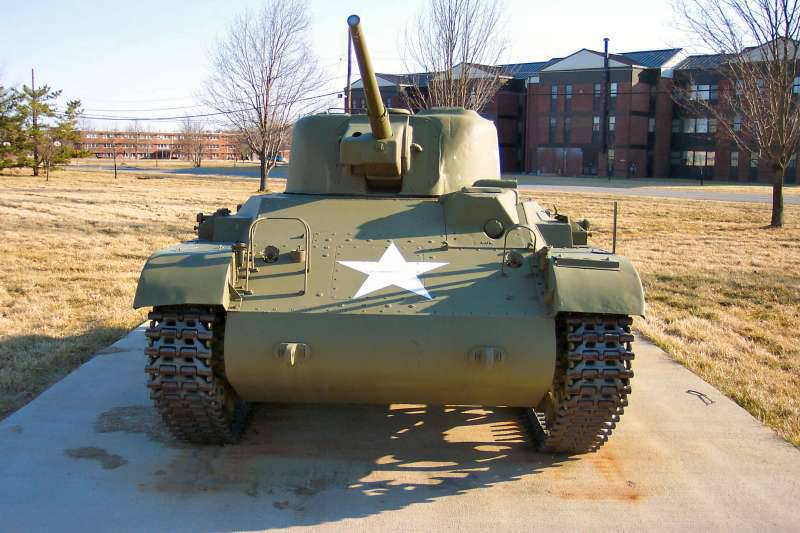
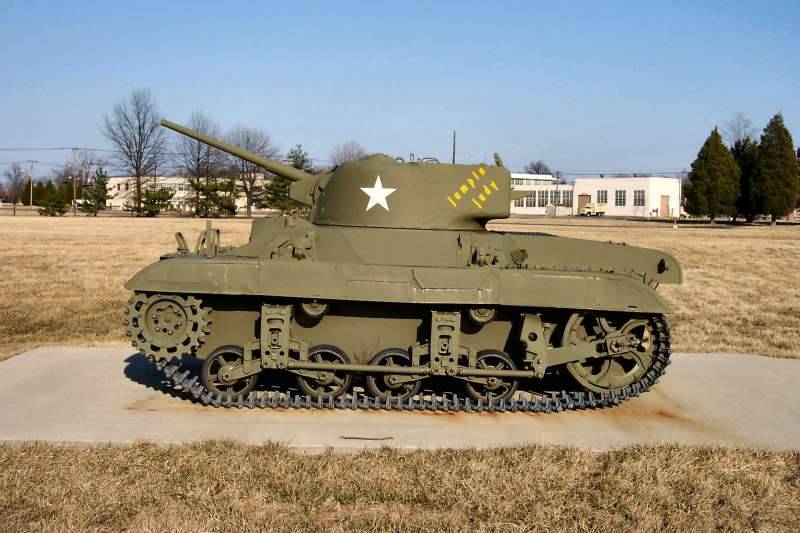
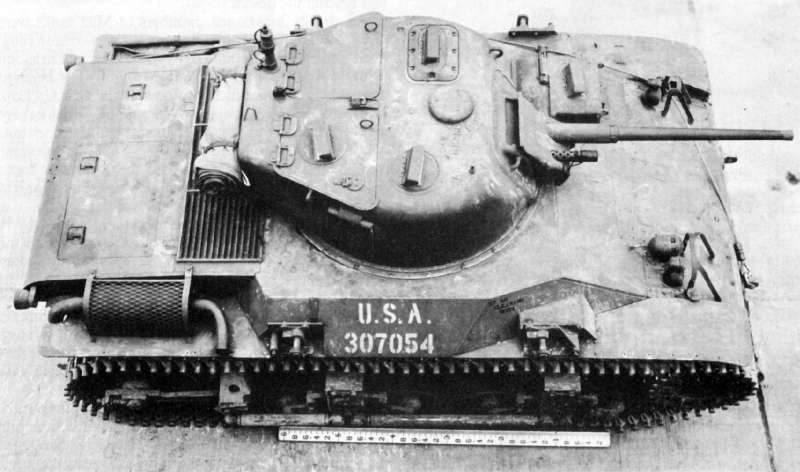
Information